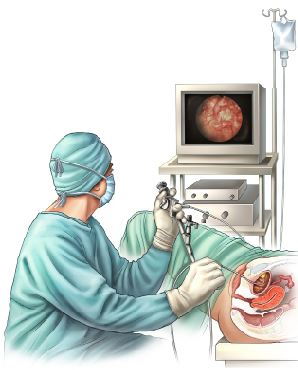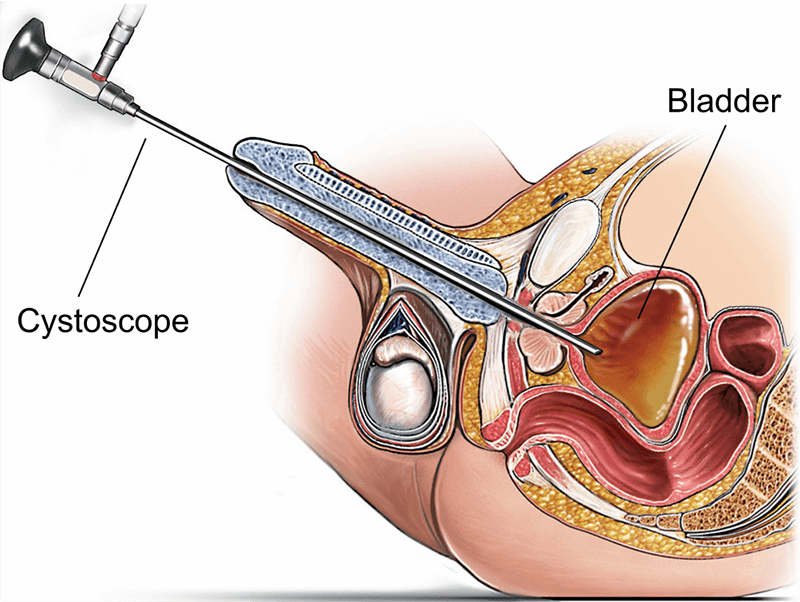
What is a Cystoscopy?
Cystoscopy is a procedure that allows your doctor to examine the lining of your bladder and your urethra (the tube that carries urine out of your body). A tiny camera called a cystoscope is advanced into your urethra and down the channel to your bladder.
Most commonly, this is done on the 1st floor of the North Island Hospital Comox Valley, at the outpatient department. You will be taken into the cystoscopy suite by the cystoscopy nurses. Patients are awake for this procedure and we use an anesthetic jelly to numb the urethra. Sometimes, patients will have sedation or an anesthetic for this procedure.
Why you may be having a Cystoscopy?
- Investigate common urologic problems including: blood in the urine, incontinence, infection, difficulty voiding, frequent urinary tract infections, or overactive bladder.
- Diagnosis: examples include bladder cancer, bladder stones, inflammation, causes of bleeding, urethral stricture (narrowing).
- Treatment: some common issues, such as very small bladder stones, or small bladder tumors can be managed in cystoscopy. We also use a cystoscope to inject some medications into the bladder, such as Botox for overactive bladder.

What happens at my Cystoscopy appointment?
- You will arrive at the outpatient department 30 minutes before your scheduled appointment time.
- You will meet one of our excellent cystoscopy nurses who will ask you some questions about your medical health.
- You will change into a gown.
- The nurses will bring you into the cystoscopy suite where you will meet the physician.
- You will lay down on the bed.
- Your skin will be washed with a warm antiseptic wash and then the lidocaine lubricating jelly will be inserted into your urethra.
- The doctor will then slowly insert the cystoscope. You will be able to watch the procedure on the screen. Patients will often feel a sensation of needing to void as we pass through the urethra.
- Once inside your bladder, the doctor may take a urine sample and then will fill your bladder with a sterile solution. The doctor will then fully inspect your bladder and will discuss what they are seeing on the screen. You are welcome to watch and ask questions.

What happens after a Cystoscopy?
- We encourage you to drink at least 2L of water per day for a few days after the procedure.
- You may have some discomfort after the procedure. This includes a burning sensation when you void or needing to void more frequently for a few days.
- You may also notice that your urine looks pink or red, which represents a little bit of blood in the urine.
- Call your doctor if the following occurs:
- Inability to void after the cystoscopy.
- Passing large blood clots.
- Nausea/vomiting or fever.
- Symptoms that are progressively worsening or last >48-72 hours.

